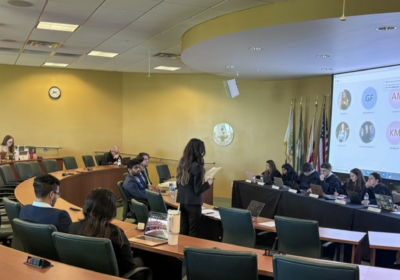Pole shift prompts change in Tampa
The location of Earth’s magnetic poles has always been inconsistent, but a recent acceleration in their shift has caused noticeable changes in Tampa.
After changes to one Tampa International Airport (TIA) runway were completed last week, the other two facing changes this month, reports began circling about the magnetic pole shift and what it means for Florida.
USF geology professor Mark Stewart said the magnetic field has been weakening for thousands of years, but what is happening now is part of a gradual shift of poles that has been moving for around 40 years.
“Thirty or 40 years ago, Florida was at a higher magnetic latitude,” Stewart said. “We used to be at about 60 degrees north magnetic latitude because the (magnetic) pole was down in the southern Canadian arctic islands … but now we’re only at 38 degrees magnetic latitude because the pole has shifted up into the Arctic Ocean. The main effect that we see is that the direction that a compass needle points varies with respect to true north, and that changes.”
Aside from true north, which is the north shown on a map, there is also magnetic north – the north shown on a magnetic compass – which shifts based on currents from inside the planet. The angle between the two is referred to as declination.
Because a magnetic compass in Florida no longer points to true north, TIA has had to repaint their runways to account for the accelerating shift, said Brenda Geoghagan, director of Public Information and Community Relations for TIA.
“When a pilot aligns the aircraft in position to land or take off on a runway, the magnetic compass in the aircraft should point to the same relative number as the runway designation. This is a very important aspect of pilots orienting their aircraft to the correct runway,” Geoghagan said in an e-mail. “This changeover requires a massive coordinated effort with the airport, Federal Aviation Administration (FAA) Air Traffic, FAA flight procedures and publications and the pilots. We will be removing and remarking pavement on all three runways, over 40 taxiways and replacing over 100 sign panels.”
The USF campus will also experience directional changes.
“When USF was just established here in Tampa, 1960, a compass needle would have pointed about 1 or 2 degrees east of (true) north,” Stewart said. “In 1980, it would have pointed 1 or 2 degrees west of north and now it points 5 or 6 degrees west of north.”
Geologists, surveyors or anyone still using a magnetic compass on campus has to account for the difference using a declination calculator, he said.
Despite some fears about a dramatic pole reversal, Stewart said the shift poses no danger and would most likely not affect the weather.
And though KTSM, News Channel 9 in Texas reported that the Aurora Borealis may be visible from Florida, Stewart said the poles are moving in the wrong direction for the phenomenon to occur. A northern lights sighting, he said, could be catastrophic.
“The last time it was seen this far south was in 1959; it was visible in Cuba,” he said. “It’s called a Kerrington event and it’s this horrific solar storm. Back then it actually induced such strong electrical currents in telegraph wires that telegraph wires and poles were set on fire.”
If a Kerrington event occurred in Florida today, Stewart said it could leave the U.S without power for “many, many months.”
“Now, if that happened, first of all it would shut down all satellites … all GPS, all telecommunications, dead,” he said. “The next day, as it built up strength, probably all those long wires that connect all of our electrical power plants would generate huge current surges that would wipe out all the transformers around North America, Northern Europe, Northern China, Korea, Japan – we would basically lose all electrical power … it would take us about a year or two to replace the transformers.”






